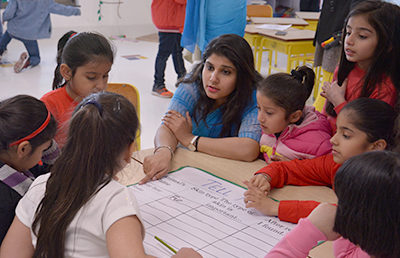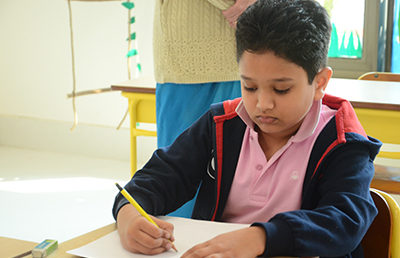Do you know about that experiment where a group of mice were kept in a cage for months. They were fed properly, given spaces and everything but after a point, even when the cage door is opened for them to leave, the mice remain inside.
They did not try to escape because of their mindset constrained by their previous environment. This fascinating experiment highlights the power of mindset: once we perceive our boundaries, we tend to stay within them—even when those boundaries no longer exist.
Likewise, developing a growth mindset in kids can help them find their potential, and move away from self-imposed boundaries & limitations to take charge of every challenge with heart & soul.
Understanding the Growth Mindset
Growth mindset is nothing but simply a belief that abilities, talent & intelligence only comes through dedication, consistency, & hard work. Whereas in opposition to this, a fixed mindset is a belief that change is unnecessary. Everyone, especially children should adopt a growth mindset to transform their approach to learning, resilience, & self-improvement.
Why is this important?
Theories have shown that children with a growth mindset emerge victorious in the face of difficulties, and view challenges as opportunities for self-growth and receive higher academic & personal success. They are not scared by the setbacks but rather look at them as a part of their learning process.
How to Teach a Growth Mindset to Children
- Model the Mindset: Children learn by example. Show the growth mindset in your own life and how you follow it. Make them a part of decisions you take with reasons why you took it and what are the things you analysed or took into consideration. Share stories of your time how you overcame challenges through effort.
For instance, if you’re learning a new skill, narrate the process and the incremental improvements you’ve made.
- Praise Effort, Not Just Achievement: The world is there to praise them after a victory but be the hand that pats on their back for their efforts even if lost. Just a little, ‘I’m proud of how hard you worked for this’ could be a big boost for them. It can help reinforce the value of persistence and problem-solving.

- Encourage a Love for Learning: QnA is the best medicine for curious kids. Encourage children to ask questions, engage in conversations with them and help them explore new interests. Give them opportunities to be a part in activities that challenge them to put their minds into deep thinking and develop opinions of their own. Maybe you can start with puzzles, board games, monopoly, business etc.
- Introduce Growth Mindset Activities For Children: Engaging children in specific activities can help them develop a growth mindset. Activities such as setting personal goals, tracking progress, and reflecting on what they’ve learned can reinforce the idea that growth comes from effort. Try incorporating simple exercises like “reflection journals” where children jot down what they learned from mistakes and how they plan to improve.

- Read Growth Mindset Books for Kids: Literature can be a powerful tool in teaching a growth mindset. Books like “Giraffes Can’t Dance” by Giles Andreae or “The Most Magnificent Thing” by Ashley Spires offer engaging stories that illustrate the principles of perseverance and creativity.

Growth Mindset vs. Fixed Mindset for Children
Understanding the difference between a growth mindset and a fixed mindset can help parents and educators address and shift limiting beliefs. A fixed mindset might lead a child to avoid challenges or give up easily, believing their abilities are limited. In contrast, a growth mindset encourages embracing challenges, learning from feedback, and persisting through difficulties.
Growth Mindset Parenting Tips
- Use Positive Language: The language we use can influence a child’s mindset. Replace statements like “You’re so smart” with “You worked really hard on this.” This helps children understand that effort, not inherent ability, leads to success.
- Teach Resilience Through Failure: Help children see failure as a natural part of the learning process. When they encounter setbacks, guide them through analysing what went wrong and how they can adjust their approach.
- Set Challenges: Encourage children to take on new and challenging tasks. This could be anything from tackling a difficult maths problem to learning a new sport. Support them through the process and celebrate their perseverance.
Cultivating a growth mindset in children is a powerful way to equip them with the skills and attitude needed for lifelong learning and resilience. By modelling a growth mindset, praising effort, encouraging exploration, and using effective strategies and resources, we can help our children develop a love for learning and a belief in their ability to grow and improve.




